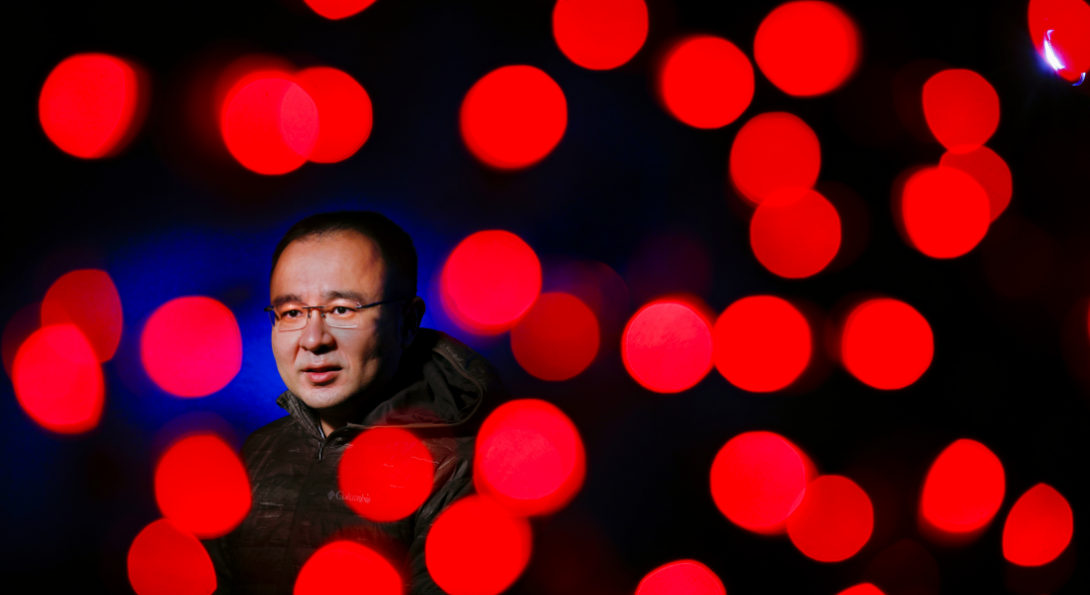BioE researchers look to unlock the secrets of red blood cell membranes

Text block one
Red blood cells are the supply trains for the body, keeping our hearts, lungs, muscles, and other organs healthy and running by providing oxygen and taking away carbon dioxide. The structure of these critical cells, however, is not fully known to doctors and researchers.
Assistant Professor Zhangli Peng from the Richard and Loan Hill Department of Bioengineering and his team hope to fill in some of the gaps of knowledge surrounding these life-giving cells by taking an outside-in approach.
The researchers used new data from the large-scale study of proteins — known as proteomics — of red blood cells and cryo-electron microscope images to map the topology of the membrane network that encases the red blood cells. Peng said they decided to zoom in on the membrane because red blood cells constantly deform while traveling through capillaries in the body, and these membranes are altered in many debilitating diseases such as anemia, malaria, and diabetes.
Using the proteomic data and topology information, along with theoretical math, computer simulations, and laboratory experiments, the team created an accurate and concise constitutive model of the red blood cell membrane based on its microstructures. The model is the first of the red blood cell membrane to take into account the higher densities of spectrin, a cytoskeletal protein that lines the side of the plasma membrane in some cells, and the distributed values of different molecular lengths.
While creating the model, Peng said they discovered it was critical to consider the natural length distribution of the cytoskeletal protein in order to predict the strain hardening behavior of the membrane if the higher density of proteins from the proteomic analysis was applied.
“We were surprised that the protein density is much higher, three times in fact, in the proteomic data than the protein density that researchers have been using for decades,” Peng said. “This gives a completely new picture of the red blood cell cytoskeleton.”
Peng noted this novel model can be used by biomedical engineers and biophysicists to analyze red blood cells and could lead to a better understanding of blood disorders and possible treatments down the road.
“This will really help us better understand how red blood cells can become deformed and why they deform in particular ways from a molecular point of view,” Peng said.
Peng and his colleagues recently published a paper in Biophysical Journal on the research titled “Constitutive Model of Erythrocyte Membranes with Distributions of Spectrin Orientations and Lengths.”
Additional authors on the paper include Richard Waugh, department head of Biomedical Engineering at the University of Rochester, and graduate student Zhe Feng from Peng’s group.